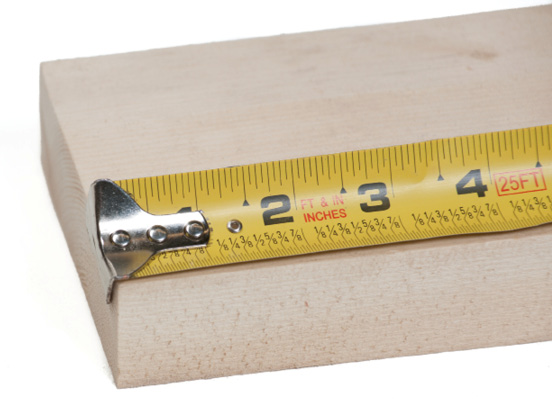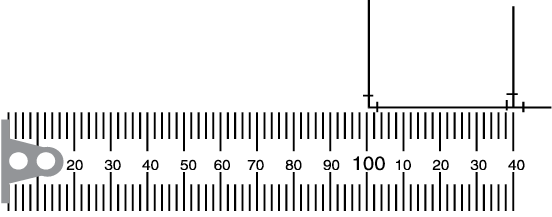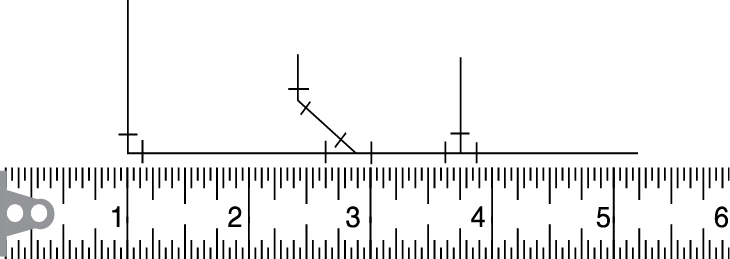3.3: Obtener dimensiones de los dibujos
- Page ID
- 153603
La mejor manera de obtener dimensiones exactas de los dibujos es usar las dimensiones explícitas (en milímetros o en pies y pulgadas) escritas entre las líneas de cota. Cualquier medida que necesites debe estar en algún lugar de los dibujos. Los dibujos normalmente solo dan cada dimensión una vez. Si hay una serie de longitudes paralelas, solo una tendrá una medida. Para encontrar la dimensión que necesita, es posible que necesite hacer referencia a otras vistas o puede que tenga que sumar o restar otras dimensiones.
Medir líneas en un dibujo para determinar la medición no es una forma precisa de extraer dimensiones. Esto se debe a que el dibujo es sólo una representación y puede no ser exacto. Las fotocopias de los dibujos pueden no estar a la escala del original.
La escala del dibujo y su precisión en la medición conducirán a imprecisiones. Por ejemplo, si la escala de un dibujo es 1/8 "= 1 '-0", un error de 1/32 "en la medición del plano equivale a 3" de error en el objeto medido. Los dibujos de detalle permiten una mayor exactitud porque son proporcionalmente más grandes. Los detalles, sin embargo, a menudo requieren más exactitud y generalmente contienen las dimensiones necesarias.
Cuando no se requiere precisión y las dimensiones aproximadas son adecuadas, los planes de medición son un método rápido de extracción de material para estimar el costo de un trabajo. En tales casos, por lo general se agrega el 10% para la tolerancia de corte y desechos.
 Los planes de medición no son lo suficientemente precisos para medir materiales con fines de corte e instalación.
Los planes de medición no son lo suficientemente precisos para medir materiales con fines de corte e instalación.Si usas la escala del dibujo, será sencillo leer las medidas. Sin embargo, en el campo a menudo necesitarás medidas aproximadas y la única herramienta de medición a mano será una cinta métrica.
Una cinta métrica de bolsillo de acero tiene un gancho móvil en el extremo que permite una medición precisa tanto cuando se pone en contacto con una superficie como cuando se engancha en el extremo de un objeto (Figura 9). El extremo de la cinta flexible en sí se acorta para permitir el gancho.

- Cinta métrica con gancho móvil

- Medición de dibujos métricos
 Los recíprocos de todas las escalas estándar utilizadas por los arquitectos se muestran en la Figura 11.
Los recíprocos de todas las escalas estándar utilizadas por los arquitectos se muestran en la Figura 11.Escala
3/32
1/8
3/16
1/4
3/8
1/2
3/4
1
1 1/2 (3/2)
3
Reciproca
32/3
8
16/3
4
8/3
2
4/3
1
2/3
1/3
- Reciprocales de básculas estándar

- Lectura de longitudes de tuberías
 Ahora completa la Autoprueba de Tarea de Aprendizaje.
Ahora completa la Autoprueba de Tarea de Aprendizaje.

